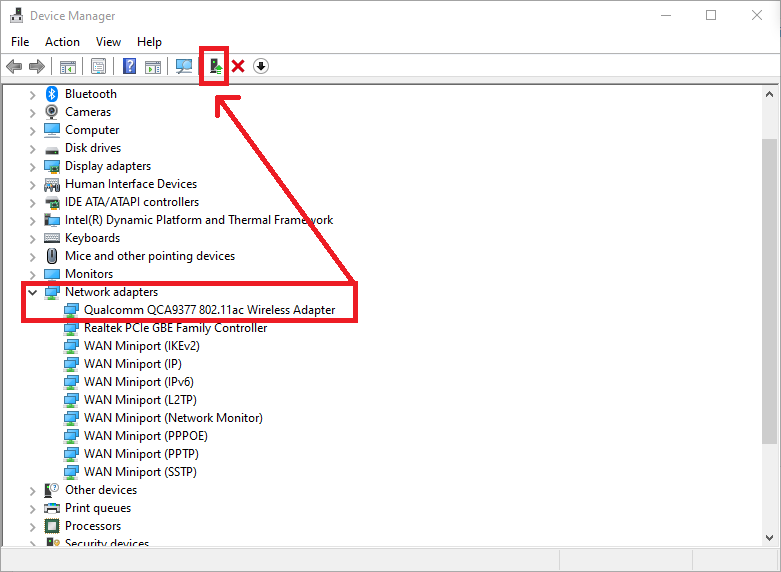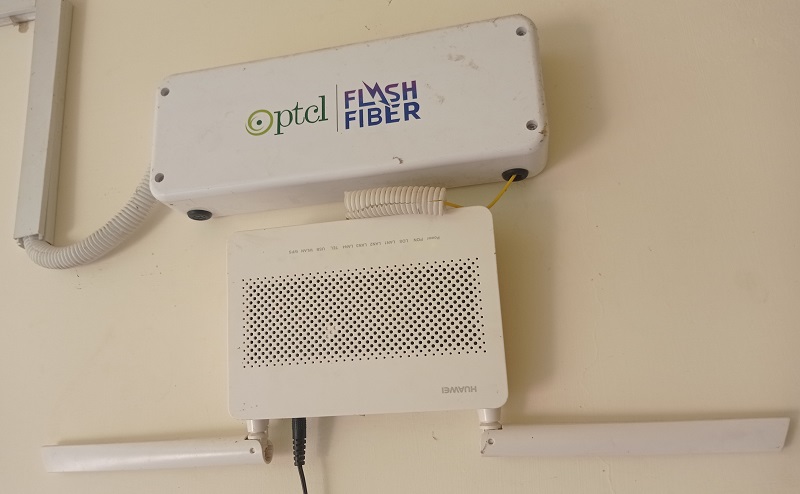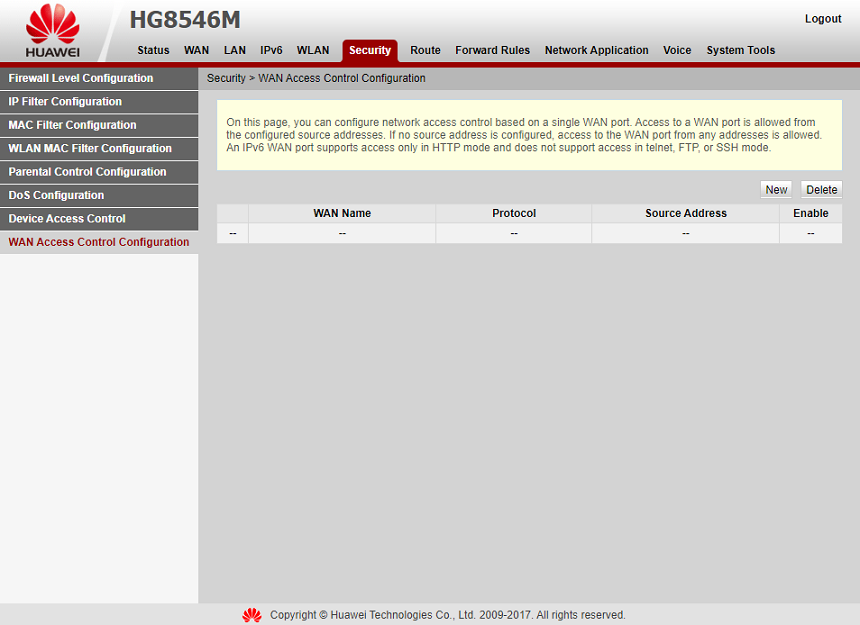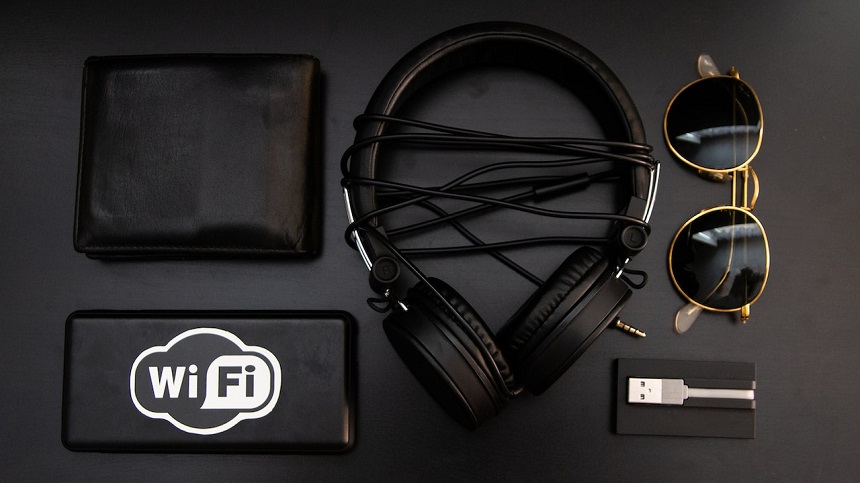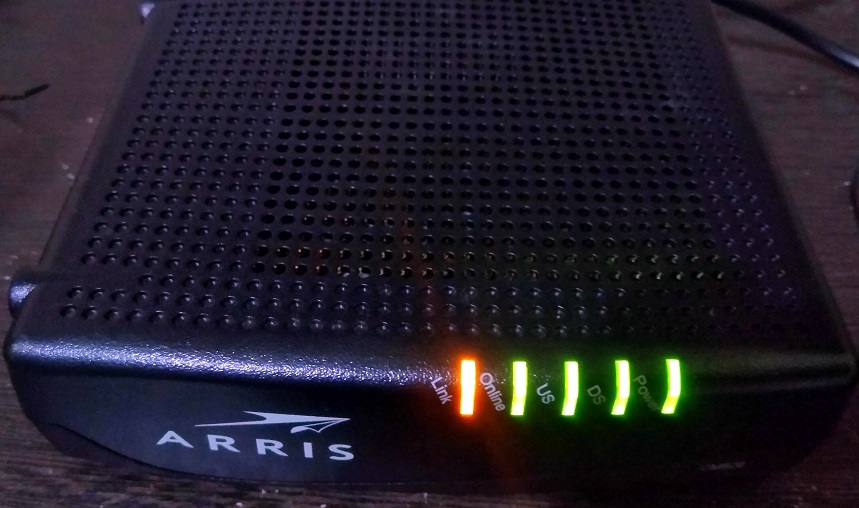Fluctuations are a very common issue during the connectivity of networks such as Wi-Fi.
Fluctuations are irregular patterns of wavelengths that affect the signals. It usually occurs when something physical disrupts the waves of your Wi-Fi network, but there are more reasons to it that I will show you in this article.
Let’s discuss all the potential reasons why your WiFi is fluctuating and how you can easily solve it using simple methods. So, let’s jump into the topic.
Why Does WiFi Fluctuate So Much?
Here are the reasons why your WiFi fluctuates:
- Interference from Other Devices
- Physical Obstructions
- Outdated Hardware or software
- Network Congestion Due To Excessive Users
- WiFi Channel Interference
- External Factors
- Reflective Surfaces
Interference from Other Devices
Interference from other devices is a common reason for WiFi fluctuations. Wireless phones, microwave ovens, and security cameras might interfere with the device’s signals.
Wireless phones, especially older models, frequently operate on the 2.4 GHz frequency, which overlaps with the WiFi frequency. They can emit electromagnetic waves that interfere with the WiFi signal, inflicting fluctuations when in use.
Similarly, microwave ovens emit strong electromagnetic radiation at the same time as heating food, which can extensively disrupt WiFi signals.
The same frequency band that WiFi uses can also be used by baby monitors, wireless cameras, Bluetooth devices, and other WiFi devices, causing interference. When these devices are close to your WiFi router or other connected devices, they can interfere with the WiFi signal, causing fluctuations and decreasing overall performance.
Physical Obstructions
Physical obstructions within your home or workspace may greatly impact the strength and stability of your WiFi signals. Walls, floors, furniture, and home appliances can all hinder WiFi signals, leading to fluctuations in connectivity.
Large portions of furnishings, consisting of shelves, bookshelves, or refrigerators, can hinder the WiFi signal. Additionally, home appliances that emit electromagnetic interference, such as televisions or washing machines, can disrupt the WiFi signal and contribute to fluctuations.
Outdated Hardware or software
Device drivers are software programs that allow your computer’s operating system to communicate with hardware, including your WiFi adapter. Outdated or incompatible drivers can lead to compatibility problems, bad overall performance, and WiFi fluctuations.
WiFi technology evolves, with new requirements providing faster speeds, more variety, and better balance. If your router or WiFi adapter supports older WiFi protocols but not the latest ones, it can cause fluctuations and slower speeds.
You can update the WiFi adapter from the device manager. Click on the start menu and then click on “Device Manager” from the list. Here search “Network adapters” and expand the file. Select each network adapter one by one and update it.
Network Congestion Due To Excessive Users
Another significant factor that could contribute to WiFi fluctuations is network congestion. When too many devices are connected to the same WiFi network, the available bandwidth is shared among them, resulting in decreased overall performance and increased fluctuations.
When multiple devices use the network simultaneously, the available bandwidth is shared among them. It can cause WiFi speeds to slow, latency to increase, and the connection to fluctuate.
Video streaming, online gaming, and large file downloads are examples of intensive data activities that can consume significant bandwidth. When multiple devices participate in such activities simultaneously, the network can become overloaded, resulting in congestion and WiFi fluctuations.
WiFi Channel Interference
Channel interference from neighboring WiFi networks is also one of the common reasons for WiFi fluctuations. WiFi networks function on unique channels inside the 2.4 GHz and 5 GHz frequency bands. When multiple WiFi networks nearby use the same or overlapping channels, interference occurs, leading to signal degradation and fluctuations.
Moreover, WiFi router placement is important in ensuring the most suitable signal coverage and minimizing WiFi fluctuations. Incorrect placement of the router can result in weak signals, dead zones, and fluctuations in connectivity.
External Factors
Environmental factors such as electrical interference or weather conditions can impact WiFi signal stability. Weather conditions can also affect WiFi signals, especially on outdoor networks.
WiFi signals can be absorbed or scattered by rain, snow, fog, and high temperatures, reducing their range and causing signal degradation. High winds and storms can also cause antennas to move or misalign, reducing signal power and stability.
Reflective Surfaces
Certain surfaces, like mirrors or steel objects, can mirror WiFi signals and cause signal degradation. Mirrors have a surprisingly reflective floor that could bounce back WiFi signals. When a WiFi signal encounters a mirror, it may reflect off the surface, causing signal loss and decreasing coverage in certain areas.
Metallic items, which include metal cabinets, shelves, or appliances, can also reflect WiFi signals. These items act as barriers that block or bounce back the signals, resulting in signal loss and decreased coverage.
Some homes use foil insulation in the walls or ceilings. Foil insulation can hinder WiFi signals, reflecting and blocking them. If your private home or office has foil insulation, it can hinder WiFi signal penetration and decrease coverage in certain areas.
How To Fix WiFi Fluctuations?
You can do it by properly positioning the WifI router, reducing signal interference, updating the router’s firmware and drivers, securing your network, adjusting your router’s channel settings, reducing the number of connected devices, and restarting your WiFi router.
Here are the methods you can use to fix WiFi fluctuations:
Position Your Router Correctly
It is essential to set your WiFi router in the most advantageous location possible if you wish to achieve the greatest possible improvement in the strength of your WiFi signal. Pick a location that is easily accessible from all areas of your house or business, particularly one that is elevated and free from obstructions such as walls, furniture, and other electrical gadgets.
You may ensure greater coverage across your area and reduce the likelihood of signal interference if you position the router in an advantageous place. Bear in mind that walls and other objects might reduce the strength of the signal, which is why locating the appropriate placement is so important.
Reduce Signal Interference
Reduce the amount of interference created by other devices to further increase the strength of your WiFi connection. Keep baby monitors, wireless phones, microwave ovens, and other devices that use WiFi a safe distance from your network.
Because these devices use frequencies similar to WiFi, having one or more of them close to the router might cause the signal to get garbled. In addition, you should steer clear of positioning your router next to any other electrical equipment that gives off electromagnetic radiation, such as speakers or televisions.
If you take steps to lessen interference, your WiFi signal will be able to spread further and more efficiently, resulting in a more robust connection.
Update Router’s Firmware and Drivers
It is crucial to keep consistently checking for firmware updates for your router and installing them as they become available to keep your WiFi connection stable. These updates often contain bug fixes, security patches, and speed enhancements, all of which have the potential to improve the network’s stability and dependability.
Similarly, check that the wireless drivers installed on your devices, such as laptops or smartphones, have the most recent version available. Problems with connectivity might arise due to using outdated drivers, which may also be unable to take advantage of the most recent improvements in WiFi technology.
Secure Your Network Connection
Securing your wireless network is essential for ensuring the safety of your data as well as making the most of the signal strength of your WiFi connection. Ensure the network is protected by a password and encrypted using a strong security protocol such as WPA2 or WPA3.
If you have a secure network, then unauthorized devices won’t be able to connect to it. It will reduce the danger of incursions, which might negatively affect your network’s performance. An encrypted connection protects you from eavesdropping and maintains the confidentiality of your activity while you are online.
Adjust Router’s Channel Settings
If you are encountering interference from other WiFi networks in your area, you may be able to ease the problem by manually altering the channel settings on your router. Use a web browser to get into your router’s settings, then scroll to the part dealing with the channel settings.
Choose a channel that has less traffic and isn’t widely used by other networks in the area where you are located. You may lessen the likelihood of interference and boost your WiFi connection’s overall performance and reliability by selecting a channel with a lower user count. Experiment with a variety of channels to locate the one that functions optimally in the context of your particular setting.
Reduce the Number of Connected Devices
When an excessive number of devices are connected to a WiFi network, the network’s resources might become taxed, leading to a decline in performance and stability. It may be beneficial to free up bandwidth for other devices by turning off or disconnecting devices not currently used.
Some routers also provide device prioritization options, which give you the ability to provide extra bandwidth to particularly important devices, such as game consoles or streaming devices.
You can guarantee that all of your devices have a WiFi connection that is both stronger and more dependable by regulating the number of devices that are connected to the network and prioritizing how they use the network.
Restart Your Router
If you are having temporary problems with your WiFi connection or have noticed a drop in signal strength, restarting your router is typically all required to rectify the situation and restore normal operation.
Turn off the power to your router, wait a few seconds, and then power it back up again. The router will be able to correct any temporary problems and reestablish a solid connection once this operation is complete. If the issue continues to occur even after you have tried all the other possible solutions, you may be required to perform a factory reset on your router.
However, remember that doing a factory reset will delete all of your custom settings; as a result, you must make a backup of any essential preferences before moving on.
Conclusion
WiFi fluctuations can occur due to different factors, which include interference from different devices, physical obstructions, old hardware or software programs, network congestion, channel interference, and external factors like electric interference. Understanding these elements is crucial to make your WiFi strong and enjoy a regular and reliable net connection.
To cope with WiFi fluctuations, there are several steps you could take. First, make sure you place your WiFi router correctly in a reliable area, far from obstructions. Minimize interference by keeping other devices that operate in the same frequency band away from the router. Regularly replace your router’s firmware and ensure that device drivers are up to date.
Consider upgrading your device if your router or WiFi adapter is old. Limit the wide variety of devices connected to your network to avoid stressing its assets. Restart or reset your router. If problems persist, consult with your ISP for additional help and guidance.
You can achieve a solid and dependable WiFi connection by following those steps and addressing the specific factors that cause WiFi fluctuations. It will enhance online enjoyment and productivity and ensure easy streaming, gaming, and browsing activities.

Hey, I’m Hammad. I write for this website to help you with the IT advice about PC, RAM, CPU, Motherboard, PSU, and other PC components.
I will provide detailed guides with images, and explain step by step so you can understand the process. Check all my articles here.



